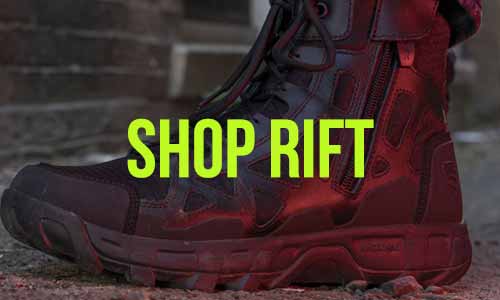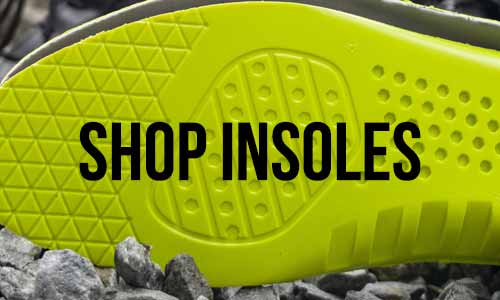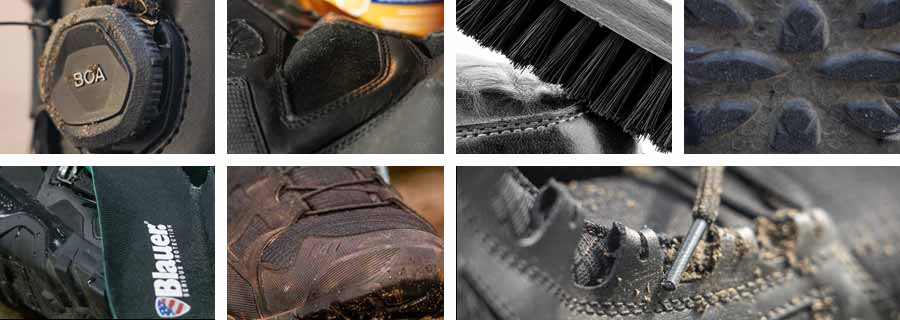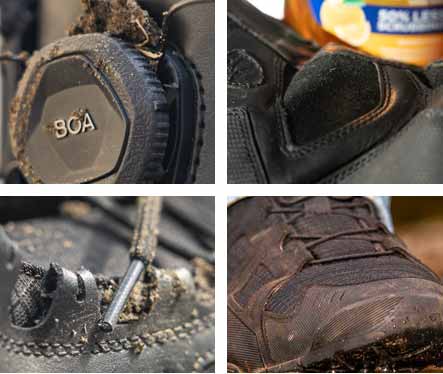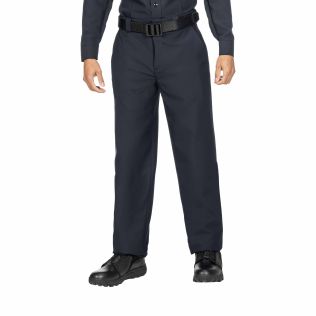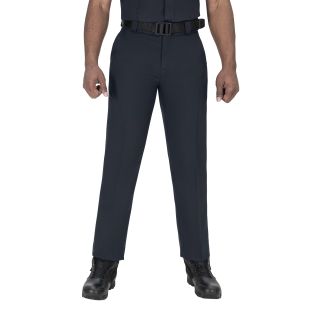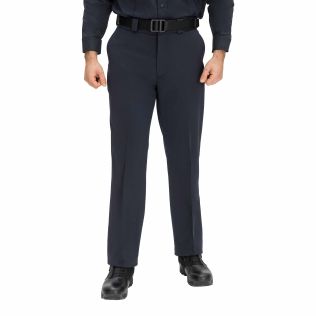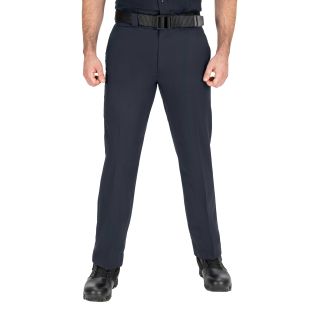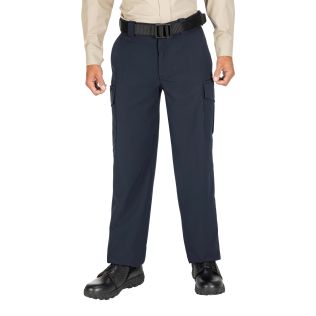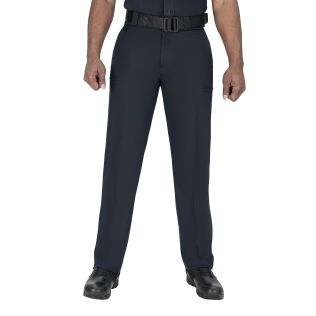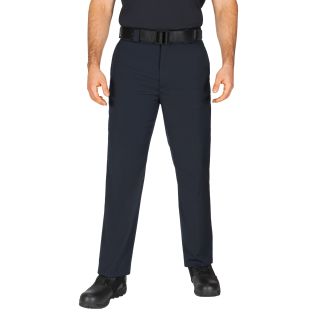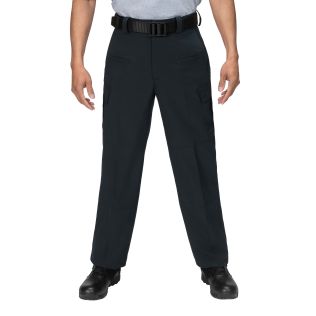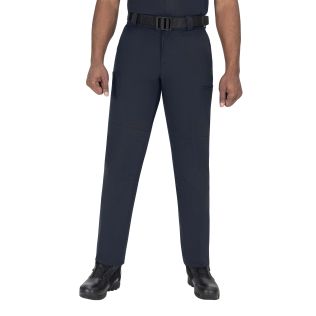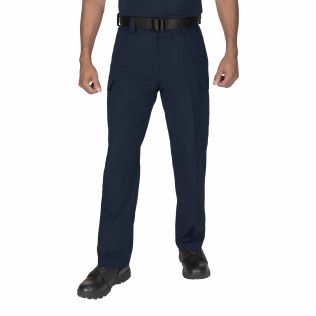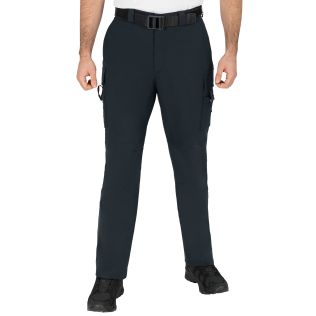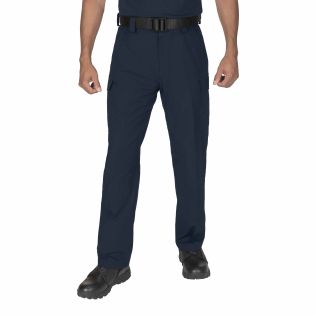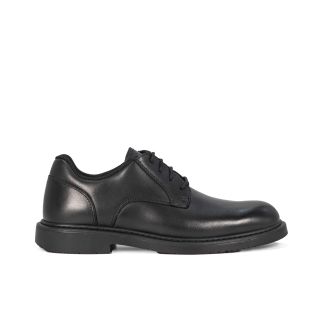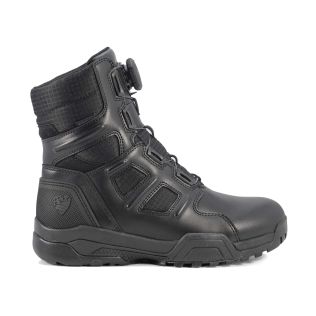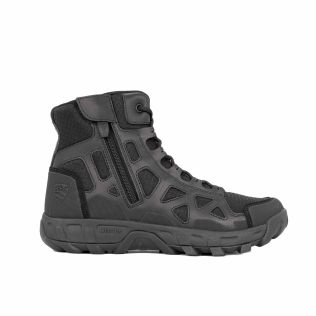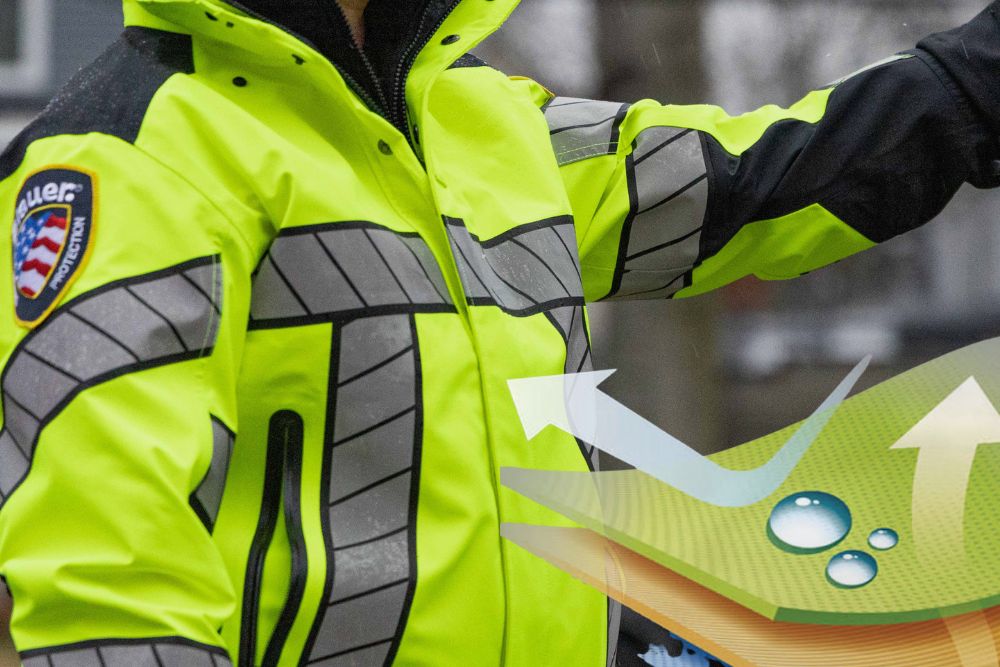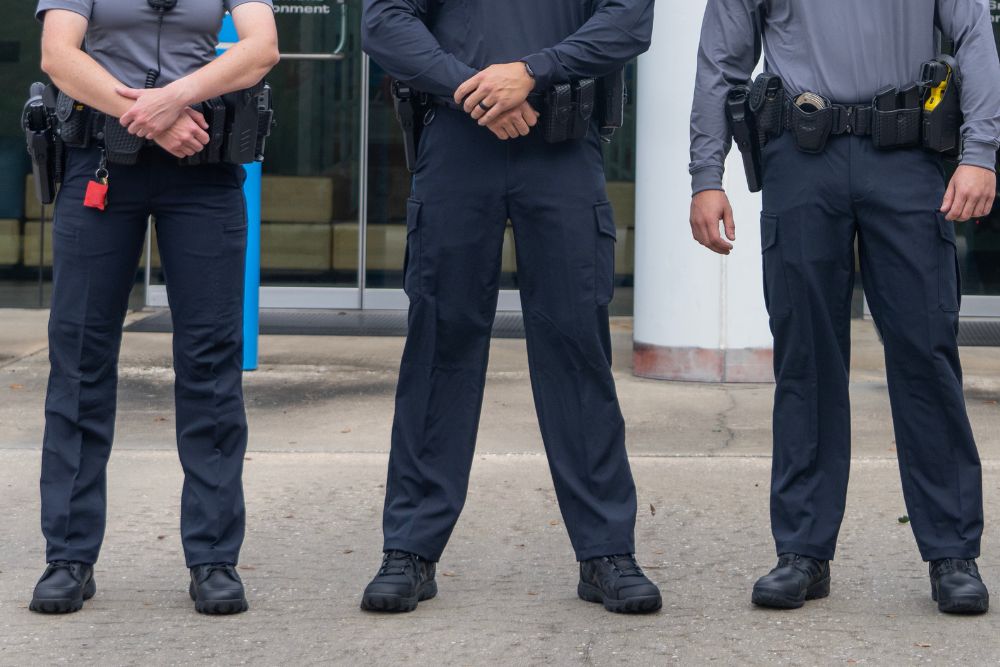


Find your Pant Style
When it comes to police uniforms, pants are more than just part of the look—they’re essential gear. The right pair of police pants provides comfort, durability, and function for long shifts in the field or at a desk. Understanding the differences between pant classes—and the specific styles like work pants, cargo pants, BDU pants, and EMT pants—will help you choose the right fit, fabric, and functionality for the job.


Class A Police Pants: Sharp, Traditional, Professional
Best for: Formal wear, ceremonies, or administrative roles where a polished look is essential.
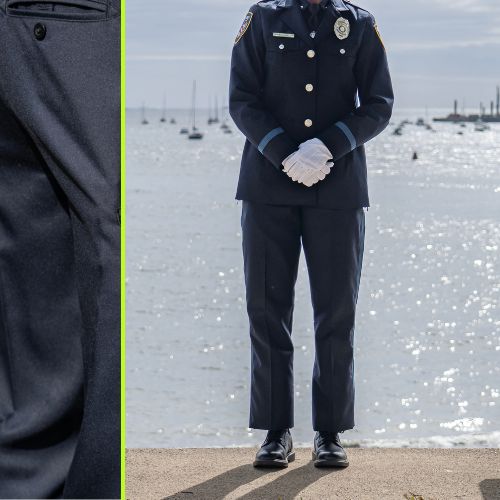
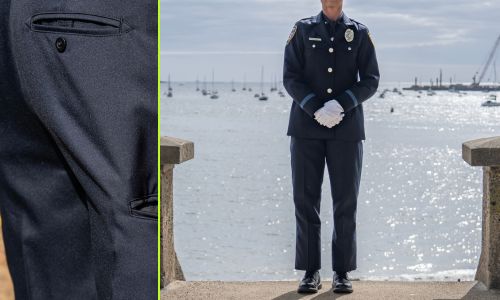
The Classic Pant
Fit: Tailored for a crisp, professional silhouette, designed to hold its shape through long hours without restricting movement.
Material: Polyester or wool blends; many are enhanced with stretch in the FlexPro line for added comfort.
Appearance: Clean and traditional, making it ideal for Class A duties and ceremonial use.
Pockets: 4 front-quarter pockets, sometimes including a 5th cell phone pocket for essential storage without disrupting the sleek appearance.
Class B Patrol Pants: Durable for Daily Duty
Best for: Patrol officers who need a balance of professionalism, durability, and comfort.
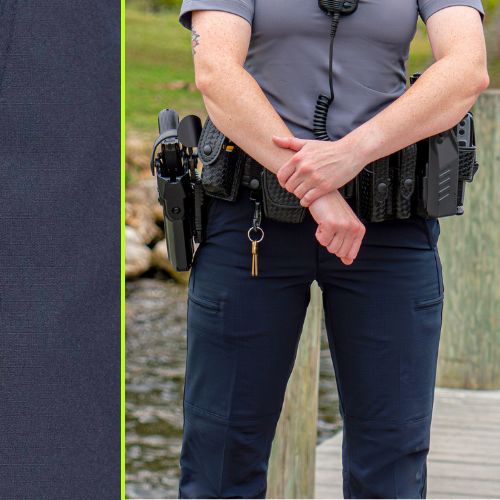
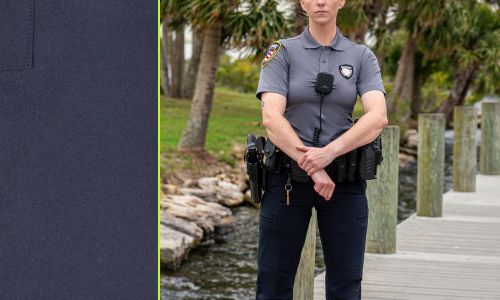
The Work Pant
Fit: Comfortable, professional silhouette optimized for active duty while maintaining a neat, uniform look.
Material: Cotton blend or ripstop blend for increased durability; tough enough for daily wear in the field.
Appearance: Styled as a Class B pant, it looks neat on duty but has a rugged feel suited for high-movement tasks.
Pockets: 4 pockets with front-quarter styling, often including a 5th cell phone pocket for quick-access storage.

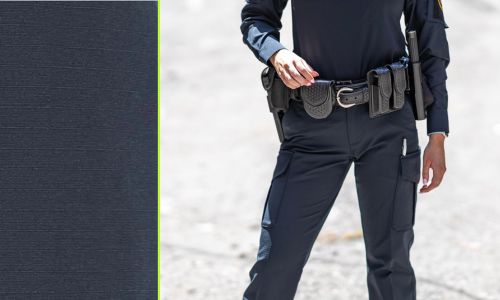
The Cargo Pant
Fit: Slightly more relaxed than Classic or Work pants to accommodate extra movement and gear.
Material: Performance ripstop fabrics like FlexRS or TenX for durability without sacrificing comfort.
Appearance: Patrol-ready, professional, and neat, blending the utility of cargo styling with a uniform appearance.
Pockets: 4 standard pockets plus 2 side cargo pockets (sometimes stylized as covert tactical pockets or double sided entry) for extra storage while maintaining a clean silhouette.
Class C Tactical Pants and EMT Pants: Built for Performance
Best for: Field operations, EMS, and tactical roles where durability, range of motion, and expanded storage matter most.
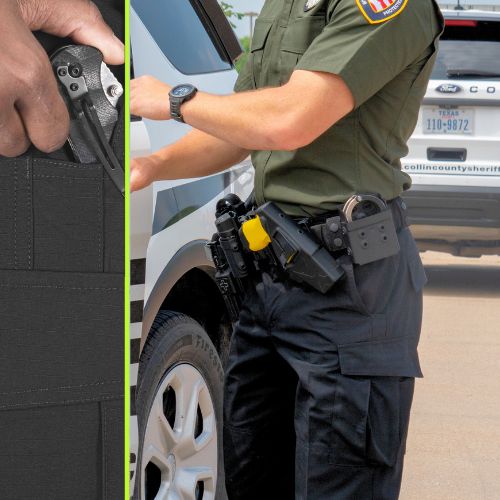
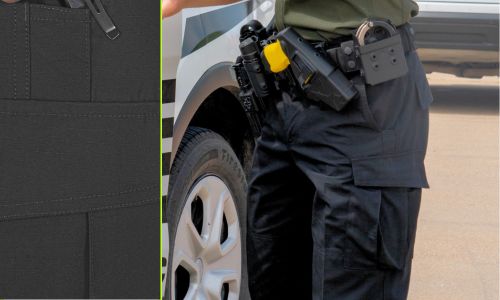
The BDU Pant
Fit: Designed for mobility and range of motion with a military-inspired cut.
Material: Performance ripstop fabrics such as FlexRS or TenX; durable, abrasion-resistant, and easy to care for.
Appearance: Tactical and rugged, leaning heavily on classic military styling.
Functionality/Pockets: 4 standard pockets plus 2 angled BDU thigh pockets for additional gear or tools.

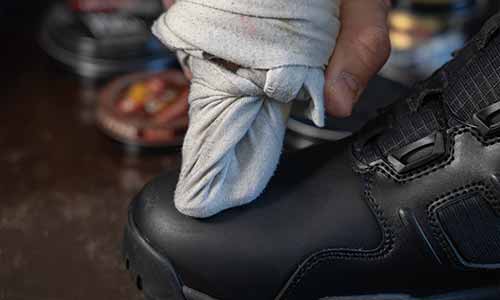
The Cargo Tactical Pant (stylized as Class C)
Fit: Utility-driven with room to move; slightly looser cut for active duty.
Material: Performance ripstop fabrics for durability and flexibility; multiple Blauer options are available including Covert Cargo and Metro Cargo.
Appearance: Rugged tactical styling, optimized for operational needs while remaining professional on patrol.
Functionality/Pockets: 4 standard pockets plus 2 double-entry side cargo pockets, providing extra storage for essential tools and equipment.

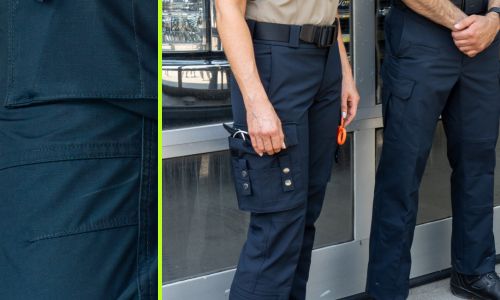
The EMT Pant
Fit: Highly functional with range-of-motion enhancements for kneeling, bending, and climbing; still fits comfortably under duty belt gear.
Material: Rugged performance fabrics that balance durability with flexibility.
Appearance: Rugged, utility-focused, with visible EMT-specific design elements.
Functionality/Pockets: 2 back pockets, 2 large front cargo pockets, 2 EMT-styled cargo pockets with double-snap closure and internal dividers, plus 2 lower-leg pockets for easy access while kneeling. Perfect for EMT and first responder tasks that require specialized storage and organization.
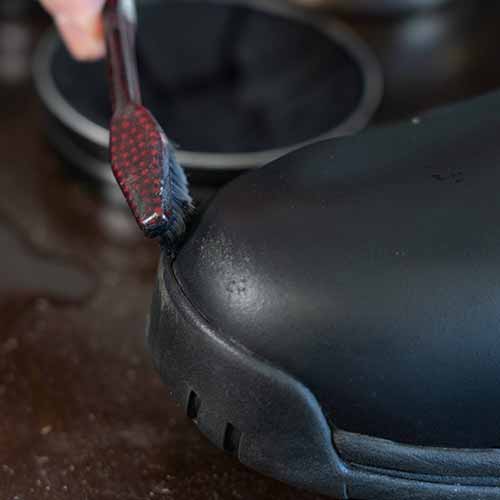
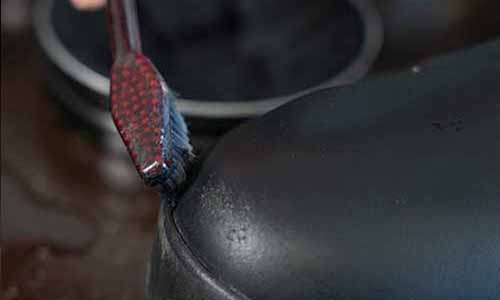
The Fire Resistant (FR) Pant
Fit:
Material:
Appearance:
Functionality/Pockets:
What To Avoid
Over the years, former Massachusetts State Trooper Rick Cronin has perfected the process of shining police boots, and part of his know-how stems from knowing what not to do. These are his top things to avoid:
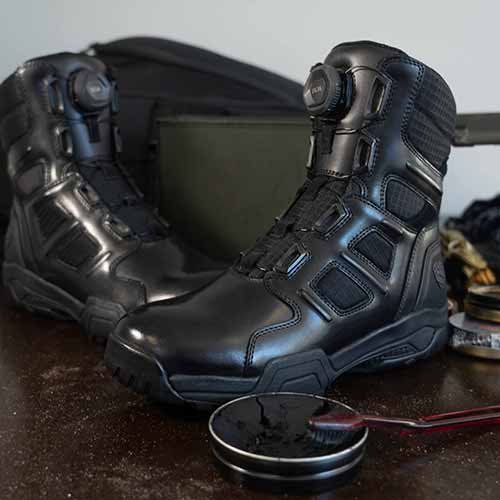

- Avoid spit: the enzymes that are located in your saliva are the first digestive process to break down the food you consume. Leather is an organic material and saliva eventually breaks down the wax and leather of your boot. Also, what cobbler would want to handle a boot loaded with spit in this day and age?
- Do not melt off old wax with lighter fluid and a flame
- Do not apply alcohol to a leather boot
- Do not boil the wax off. Build the wax up. High spots or imperfections in the shine can be re-polished and buffed to equal out the shine.


Choosing the Right Police or Tactical Pant
Need a sharp ceremonial look? Go with the Classic Pant (Class A).
Need durability for daily patrol? The Work Pant or stylized Cargo Pant (Class B) are ideal.
Need tactical or EMS-ready functionality? The BDU, Cargo, or EMT Pants (Class C) deliver maximum storage, mobility, and performance.
How Do I Strip My Boots?
To remove all the polish off of your boots, some recommend carefully pouring boiling water over them. However, Rick does not support this method. Rather than boiling the wax off, Rick says to build the wax up. High spots or imperfections in the shine can be re-polished and buffed to equal out the shine.
Shop Top Selling Police Shoes
